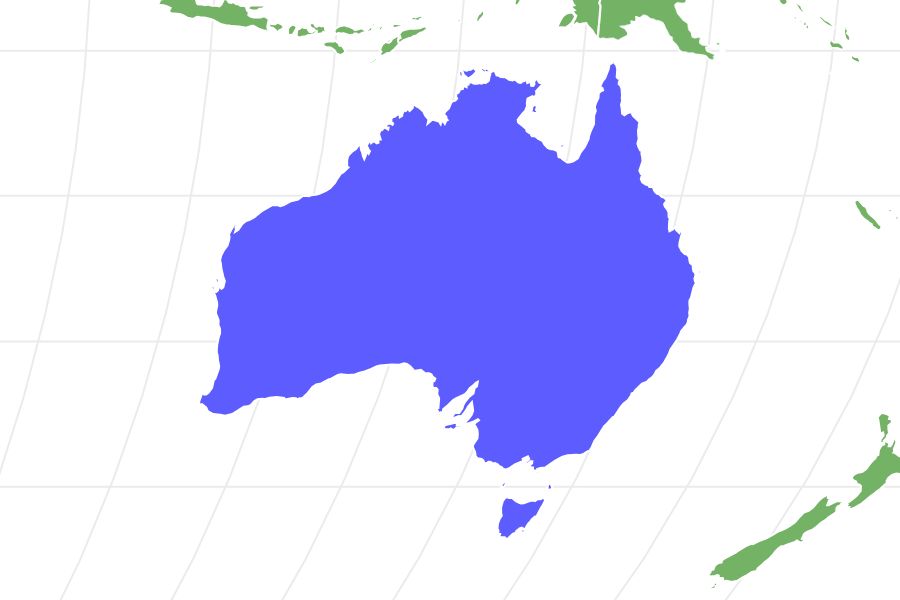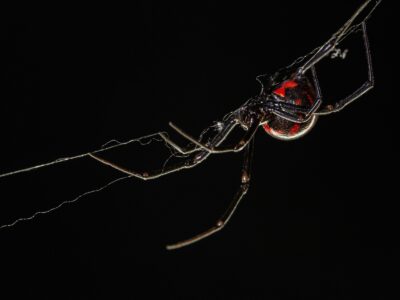Mulga Snake
.jumbotron {
background-image: url(“https://a-z-animals.com/media/2022/03/shutterstock_1149969116-e1652569654994-400×300.jpg”);
}
}
@media only screen and (min-width: 641px) and (max-width: 920px) {
.jumbotron {
background-image: url(“https://a-z-animals.com/media/2022/03/shutterstock_1149969116-e1652569654994-470×370.jpg”);
}
}
@media only screen and (min-width: 921px) {
.jumbotron {
background-image: url(“https://a-z-animals.com/media/2022/03/shutterstock_1149969116-e1652569654994.jpg”);
}
}
Mulga Snake
Pseudechis australis
Mulga Snake Scientific Classification
- Kingdom
- Animalia
- Phylum
- Chordata
- Class
- Reptilia
- Order
- Squamata
- Family
- Elapidae
- Genus
- Pseudechis
- Scientific Name
- Pseudechis australis
Read our Complete Guide to Classification of Animals.
Mulga Snake Conservation Status
Mulga Snake Facts
Mulga Snake Physical Characteristics
- Color
-
- Brown
- Lifespan
- Up to 25 years (in captivity)
- Length
- 5-10 feet
- Venomous
- Yes
- Aggression
- High
This post may contain affiliate links to our partners like Chewy, Amazon, and others. Purchasing through these helps us further the A-Z Animals mission to educate about the world’s species..

Spiders that fly! Fish that walk! And 1000+ more incredible animals. Discover them all for FREE
.photo-gallery {
–margin: 0px auto 0px;
–padding: 0px 0px 0px 0px;
}
.gallery-link {
background-image: url(“https://a-z-animals.com/media/2022/03/shutterstock_355974692-1024×614.jpg”);
background-repeat: no-repeat;
background-size: cover;
background-position: center;
height: 500px;
justify-content: center;
text-align: center;
align-items: center;
display: flex;
border: 2px solid #000;
}
.gallery-link img {
height: 50%;
}
@media only screen and (max-width: 768px) {
.gallery-link {
height: 300px !important;
}
}
View all of the Mulga Snake images!
The mulga snake, which is often referred to as the king brown snake, is a venomous snake that lives in most parts of Australia.
Though it is sometimes raised in captivity, it is a species of Least Concern that often succumbs to the poison of the cane toad. It is known for fighting for dominance over other male mulga snakes, and it is quite aggressive with humans as well. These snakes have reticulated scales with two-tone coloring.
5 Amazing Mulga Snake Facts
Here are a few fun facts about the mulga snake.
1. The mulga snake is also known as the king brown snake.
2. The most active time of day for the mulga snake is at dusk. It prefers to reside in areas of shelter in the middle of the day or the darkest hours of the night. It prefers to be the most active in cooler times of day.
3. Males will wrestle each other to earn mating privileges with females. The winner of the fighting mates with the female, and she produces up to 19 eggs (though the size of the female will determine the number of eggs that she lays). After 70-100 days, the eggs hatch, and the hatchlings are already almost 9 inches long at birth.
4. When correctly cared for in captivity, mulga snakes can live to be up to 25 years old.
5. The diet of the king brown snake is generalist in nature, since they’ll eat just about anything (including other king brown snakes). In captivity, these snakes sometimes each their own feces, nourishing their diet with anything that they have access to.
Where to Find Mulga Snakes
The king brown snake is spread throughout Australia with the exception of Victoria and Tasmania. However, it natively lives in the northern, western, and central regions of the country. It is rare to see one in Queensland. More specifically, they are found in some parts of Gladstone, Gayndah, Dalby, the Warrumbungles, Ceduna, Nullarbor Plain, and Kalgoorlie.
Much like the approach that this snake has to its diet, it also is a habitat generalist, which means it will find a place to live almost anywhere. Their typical habitat can be woodlands, grasslands, scrublands, or even deserts. Though many of these regions can be rather arid, the mulga snake prefers a habitat with more moisture. These snakes aren’t the least bit shy around humans, often finding their way into wheat fields and buildings.
Mulga Snake Scientific Name
The mulga snake, which is also known as a king brown snake, has the scientific name Pseudechis australis. Pseudechis comes from scientific Latin and ancient Greek, loosely translating to mean “viper.” Australis, on the other hand, comes from a Latin word that refers to the southern region of the snake.
It was originally identified by John Edward Gray (an English zoologist) in the mid-1800s, and it was named Naja australis at the time. It has gone through multiple scientific names through the last two centuries including Pseudechis porphyriacus (by Albert Günther), Pseudechis darwiniensis (by William Macleay), Pseudechis cupreus (by George Albert Boulenger), Pseudechis denisonioides (by Franz Werner), and Pseudechis platycephalus (by Donald Thomson). It wasn’t given the name it has today until decades later, though Struan Sutherland – a medical researcher in Australia – states that the issue with calling it a king brown snake is that the antivenom that treats bites isn’t for brown snakes; it is for black snake bites.
It is of the family Elapidae and the class Reptilia.
Mulga Snake Population & Conservation Status
The mulga snake is 1 of 9 different species of brown snake in Australia, though their exact population is unknown. Considering the stability of the species, the IUCN Redlist considers it to be a Least Concern species. However, the spread of the cane toad has likely had an impact on their decline in recent years.
How to Identify Mulga Snake: Appearance and Description
This snake is quite big, reaching lengths of up to 11 feet long in its natural environment. The upper pat of the body tends to be tan if they come from northern Australia, though snakes from southern Australia are dark brown instead. Depending on the reflection of light, these snakes sometimes look reddish-green as well, which is probably due to the two-toned dorsal scales. The belly is lighter than the rest of the body, usually appearing cream, white, or salmon pink.
Identification of the mulga snake primarily relies on both the number of and arrangement of scales. The mulga snake has 50-75 subcaudal scales, 185-225 ventral scales, and 17 rows of dorsal scales. Without careful attention to these scales, it is fairly common for a mulga snake to be confused with an olive python, water python, spotted mulga snake, or coastal taipan during identification.
How to identify a mulga snake:
– Up to 11 feet long.
– Brown (light or dark) back with a pale belly.
– 17 rows of dorsal scales.
– Reddish-brown irises.
Mulga Snake Venom: How Dangerous Are They?
The venomous king brown snake is quite dangerous to humans, though it isn’t nearly as potent as other species in the area. Still, if enough venom is released in a bite, serious effects can occur, like paralysis from muscle damage or difficulty with coagulation. Pain, swelling, and potentially necrosis can occur, though death by a mulga snake has not happened in over 40 years. These snakes are known to cause substantial pain, biting repeatedly to release more venom.
Proper identification of this snake is crucial to proper treatment of the snake bite, though less than 5% of snake bites between 2005 and 2015 were the result of the mulga snake in Australia. These snakes are quite aggressive, and they’ve been known to by without provocation. If you receive a bite from the mulga snake, you need to be treated with black snake antivenom with a medical professional (as there is no brown snake antivenom). In the meantime, apply a pressure bandage to the bite and use minimal movement. Often monitoring for the next 24 hours is needed.
Mulga Snake Behavior and Humans
Typically, venomous snakes won’t really cause any harm to humans or go out of their way unless they are startled by the presence of that person. However, mulga snakes seem relentless, sometimes even biting someone while they are asleep. Ultimately, the mulga snake is not friendly, even though it is sometimes bred in captivity for the pet trade.
View all 114 animals that start with M
Mulga Snake FAQs (Frequently Asked Questions)
Is a mulga snake the same as a king brown?
Yes. While “mulga snake” is the common name, this species is also called the King Brown Snake.
Is a king brown snake poisonous?
Yes. It is incredibly poisonous, and it has been known to bite humans without any provocation.
How deadly is a mulga snake?
Without treatment by antivenom, the mulga snake’s bite can be fatal. However, there hasn’t been a case of a death by a mulga snake recorded in the last four decades.
Is the mulga snake aggressive?
Yes. In fact, there are studies that show that the mulga snake might even bite someone when they are sleeping.
What does the mulga snake look like?
The mulga snake has reticulated, two-tone scales with both pale yellow and brown hues. Their head narrows at the snout, and their eyes have reddish-brown irises.
Where are mulga snakes found?
Primarily, this species is an Australian snake. However, it isn’t found in Victoria or Tasmania. All other regions of Australia have recorded the presence of the King Brown Snake.
How do mulga snakes hunt?
The speed of the mulga snake is the primary reason that it is so capable of catching a variety of prey in their diet. They bite multiple times when they catch their prey, preventing it from fighting back.
What do mulga snakes eat?
The diet of a mulga snake is quite broad. Birds, amphibians, small mammals, and even reptiles are on the menu for these predators. More specifically, they’ll consume frogs, eggs of birds and reptiles, skinks, geckos, whip snakes, thornbills, rodents, dasyurids, and the brown tree snake. If they are hungry enough, they may even revert to cannibalism, eating other King Brown Snakes.
What are the key differences between mulga snakes and king cobras?
The key differences between mulga snakes and king cobras are size, distribution, lifespan, venom resistance, threat display, and method of attack.
Sources
- , Available here: https://en.wikipedia.org/wiki/King_brown_snake
- , Available here: http://bransonswildworld.com/eastern-king-brown-snake/
- , Available here: https://australian.museum/learn/animals/reptiles/mulga-snake/
















